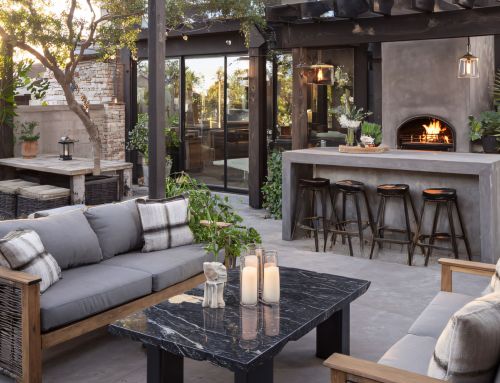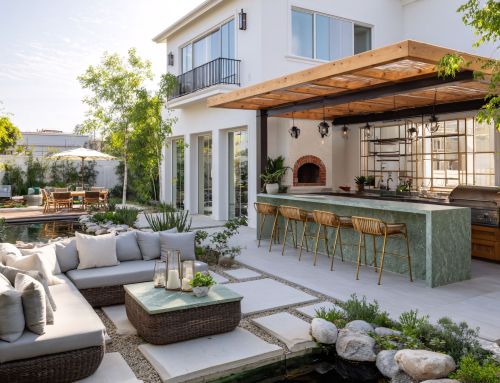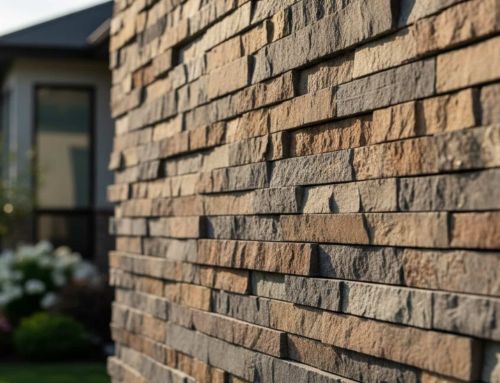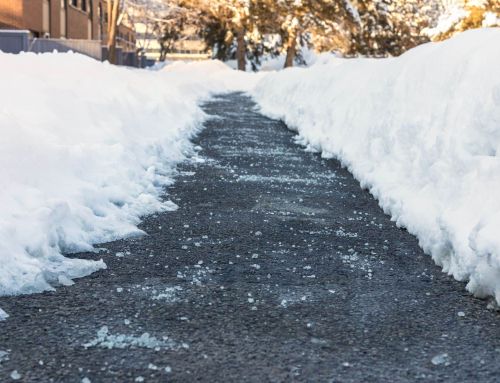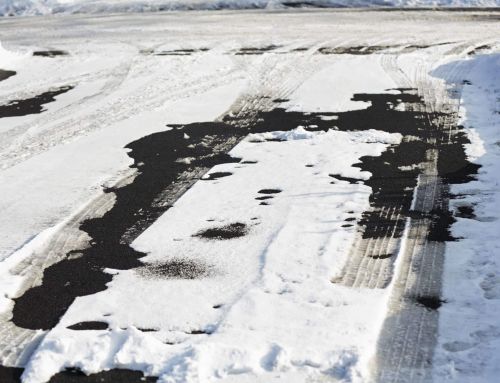Guide to Choosing the Best Pavers & Slabs for Your Outdoor Space
Are you dreaming of how to transform your bland backyard into a stunning outdoor retreat? The secret to creating an inviting outdoor space often lies right beneath your feet. Pavers and slabs serve as the foundation for beautiful patios, elegant walkways, and durable driveways that can completely reinvent your landscape.
Introduction to Outdoor Spaces
Pavers and slabs offer a flexible way to turn outdoor areas into functional and attractive spaces for relaxation and entertainment. Whether you’re planning a patio, walkway, driveway, or poolside area, these materials provide a strong foundation while giving you room to design layouts that match your home’s style.
You can choose from a variety of materials, shapes, and textures, such as brick, natural stone, or concrete. Pavers are smaller and thicker, making them great for areas with heavy use, while slabs are larger and thinner, better for wide open surfaces. With the right design, they can increase your home’s value and create comfortable spaces to enjoy with family and friends.
Types of Materials
Concrete Pavers
Concrete pavers are small, durable units available in many shapes, colors, and finishes. Perfect for driveways, patios, and walkways, these pavers offer a textured, interlocking design that resists cracking and shifting. Their versatility allows for creative patterns and layouts that complement any outdoor design style. These features show how well pavers work in various outdoor settings.
Concrete Slabs
Large, sleek pieces with minimal joint lines that create a smooth, modern appearance. Ideal for patios and walkways where a clean, open look is desired, concrete slabs offer a contemporary aesthetic and are perfect for wide, uninterrupted surfaces. Their simplicity makes them a great choice for minimalist designs enhanced by vibrant colors.
Natural Stone Options
Stone pavers and slabs provide a natural and timeless look for outdoor spaces. Options include:
- Granite: Tough with distinctive flecking
- Limestone: Warm, earthy tones with fossil inclusions
- Sandstone: Rich color variation with natural slip resistance
- Slate: Dramatic textures with natural cleft surfaces
Paving stones come in a variety of colors and sizes, making it easy to find the perfect match for any landscape design. Their natural variation ensures that no two installations look exactly alike, completing a truly unique outdoor space.
Other Material Choices
Wood elements can complement stone or concrete pavers, creating warm accents or pathways with a natural feel. Porcelain pavers, a newer option on the market, offer extreme durability and stunning visual appeal with minimal maintenance.
Eco-Friendly Options
Permeable Pavers
Permeable pavers allow rainwater to soak into the ground instead of running off into storm drains. This reduces pollution, prevents puddles, and supports healthy landscaping by directing water to plant roots. Their design promotes better drainage and helps replenish groundwater supplies.
Recycled Material Pavers
Some pavers are made from recycled materials such as glass, crushed concrete, or reclaimed stone. These sustainable options help reduce landfill waste while offering the same durability and aesthetic appeal as traditional materials.
Choosing either of these environmentally responsible options allows homeowners to build attractive, functional outdoor spaces that are kind to the planet, without sacrificing style or performance.
Designing Pool Decks
Pavers or slabs are great options for pool decks, offering a slip-resistant, comfortable surface that enhances both safety and style. Pavers are especially popular, thanks to their textured finish that provides traction when wet and stays cooler underfoot, making them ideal for lounging and entertaining around the pool.
When selecting pool deck materials, consider these key factors:
- Slip resistance: Textured surfaces provide better traction when wet
- Heat absorption: Lighter colors stay cooler under direct sunlight
- Comfort: Smooth but not slippery textures feel best underfoot
- Durability: Chlorine and salt-resistant materials maintain their appearance longer
A well-designed pool deck can add value to a property and provide a beautiful and functional outdoor space for relaxation and entertainment. The right pavers or slabs create a seamless transition between your pool and the surrounding walls of your landscape.
Paving Stone Considerations
Paving stones are a popular choice for outdoor spaces, offering a wide range of designs and materials to choose from. There are many hardscaping products available, such as slabs and pavers, each providing unique options for patios, walkways, and driveways. Their natural variation and texture add character to any landscape design.
Homeowners should consider these factors when selecting paving stones:
- Color: Choose tones that complement your home’s exterior and existing landscape elements. Consider how the color will look when wet and how it might fade over time.
- Texture: Smoother textures create a more formal look, while rugged textures appear more casual and natural. Texture also affects how the surface feels underfoot and its slip resistance.
- Pattern: Paving stones can be arranged in numerous patterns from simple grid layouts to complex circular designs. The pattern you choose can make spaces appear larger or more intimate.
- Size: Larger stones create a more contemporary look with fewer joint lines, while smaller units allow for more intricate patterns and better weight distribution.
By choosing the right paving stones, homeowners can create a beautiful and functional outdoor space that complements their yard’s landscape and enhances their property’s overall appeal. It is also important to install them properly to ensure durability and long-lasting results.
Maintenance and Durability
Pavers and slabs can stay beautiful and durable for decades with regular maintenance. Routine care includes sweeping, washing with mild detergent, removing stains early, checking for loose pieces, and adding joint sand when needed.
It’s important to look for signs of settling or weed growth and take action quickly. Applying a sealant can boost the color, protect against stains, reduce weeds, and prevent damage from water and temperature changes. With proper upkeep, your outdoor surfaces will remain strong and attractive for years. Verify conditions regularly to avoid costly repairs.
Outdoor Space Planning
Planning an outdoor space starts with understanding how you want to use it—whether for dining, relaxing, or entertaining. Consider the size, layout, and shape of your yard, how many people the space needs to accommodate, existing features to work around, your preferred maintenance level, and how your local climate affects material choices. Pathways and walkways are key to connecting different areas and improving access throughout the space.
The most effective hardscape designs complement the home’s architecture and natural surroundings. Pavers and slabs can help define outdoor “rooms” by varying patterns, colors, or materials. With thoughtful planning, you can create a cohesive, functional, and visually appealing space that adds both enjoyment and value to your home. Take time to explore design ideas that reflect your style.
Budgeting and Cost
The cost of pavers and slabs can vary significantly depending on the material, design, and size of the project. Planning a realistic budget upfront helps ensure a successful project without unwelcome financial surprises.
Typical price ranges for materials (not including installation):
- Basic concrete pavers: $2-$6 per square foot
- Premium concrete pavers: $4-$12 per square foot
- Natural stone pavers: $8-$25+ per square foot
- Concrete slabs: $2-$8 per square foot
- Natural stone slabs: $15-$30+ per square foot
Installation typically costs an additional $6 to $12 per square foot. Hiring a professional ensures proper setup and long-term durability. Quality materials may cost more upfront but offer better value over time with less maintenance. Always take time to review quotes and scope before starting the project.
Conclusion
Choosing the right pavers and slabs is key to designing a beautiful, durable, and functional outdoor space. Whether you prefer the classic charm of natural stone, the sleek look of concrete slabs, or eco-friendly permeable options, the right materials can elevate your landscape while meeting your budget and style. With thoughtful planning, proper installation, and routine maintenance, your outdoor surfaces can provide lasting value and enjoyment for years to come.
Ready to upgrade your outdoor space? Visit Old Station Outdoor & Landscape Supply for expert guidance, high-quality pavers and slabs, and everything you need to bring your hardscape vision to life. Our team is here to help you choose the best materials for your project and ensure your yard becomes the retreat you’ve always wanted. Stop by our showroom in Norton, MA or contact us today to get started.
FAQs
What is the difference between slabs and pavers?
Pavers are small, thick units you can hold in one hand, while slabs are larger, thinner pieces that cover more area. Pavers can handle vehicle weight, but slabs are best for walking areas only.
What is the difference between paving blocks and paving slabs?
Paving blocks (pavers) are small, thick pieces that lock together and can support cars and heavy traffic. Paving slabs are larger, thinner pieces that look more modern with fewer lines but can only support foot traffic.
What is considered a paver?
A paver is a small, thick concrete or stone piece that’s at least 2⅜ inches thick. You can typically lift it with one hand, and it’s designed to interlock with other pavers to create strong, durable surfaces.



